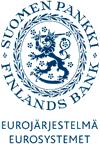 BOFIT Discussion Papers, Institute for Economies in Transition, Bank of Finland
BOFIT Discussion Papers, Institute for Economies in Transition, Bank of Finland
No 28/2015:
Current account and REER misalignments in Central Eastern EU countries: an update using the macroeconomic balance approach
Mariarosaria Comunale ()
Abstract: Using the IMF CGER methodology, we make an assessment of
the current account and price competitiveness of the Central Eastern
European Countries (CEEC) that joined the EU between 2004 and 2014. We
present results for the “Macroeconomic Balance (MB)” approach, which
provides a measure of current account equilibrium based on its determinants
together with mis-alignments in real effective exchange rates. We believe
that a more refined analysis of the mis-alignments may useful for the
Macroeconomic Imbalance Procedure (MIP). This is especially the case for
these countries, which have gone through a transition phase and boom/bust
periods since their independence. Because such a history may have
influenced a country’s performance, any evaluation must take account of
each country’s particular characteristics. We use a panel setup of 11 EU
new member states (incl. Croatia) for the period 1994-2012 in static and
dy-namic frameworks, also controlling for the presence of cross-sectional
dependence and check-ing specifically for the role of exchange rate
regimes, capital flows and global factors.
We find that the estimated
coefficients of the determinants meet with expectations. Moreover, the
foreign capital flows, the oil balance, and relative output growth seem to
play a crucial role in explaining the current account balance. Some global
factors such as shocks in oil prices or supply might have played a role in
worsening the current account balances of the CEECs. Having a pegged
exchange rate regime (or being part of the euro zone) affects the current
account positively. The real effective exchange rates behave in accord with
the current account gaps, which clearly display cyclical behaviour. The CAs
and REERs come close to equilibria in 2012 in most of the countries andthe
rebalancing is completed for some countries that were less misaligned in
the past, such as Poland and Czech Republic, but also for Lithuania. When
Foreign Direct Investment (FDI) is introduced as a determinant for these
countries, the misalignments are larger in the boom periods (positive
misalignments) whereas the negative misalignments are smaller in
magnitude.
Keywords: real effective exchange rate; Central Eastern European Countries; EU new member states; fundamental effective exchange rate; current account; (follow links to similar papers)
JEL-Codes: C23; F31; F32; (follow links to similar papers)
42 pages, October 14, 2015
Before downloading any of the electronic versions below
you should read our statement on
copyright.
Download GhostScript
for viewing Postscript files and the
Acrobat Reader for viewing and printing pdf files.
Full text versions of the paper:
dp2815%5b1%5d.pdf?sequence=1 
Download Statistics
Questions (including download problems) about the papers in this series should be directed to Päivi Määttä ()
Report other problems with accessing this service to Sune Karlsson ()
or Helena Lundin ().
Programing by
Design by Joachim Ekebom
 BOFIT Discussion Papers, Institute for Economies in Transition, Bank of Finland
BOFIT Discussion Papers, Institute for Economies in Transition, Bank of Finland
 BOFIT Discussion Papers, Institute for Economies in Transition, Bank of Finland
BOFIT Discussion Papers, Institute for Economies in Transition, Bank of Finland